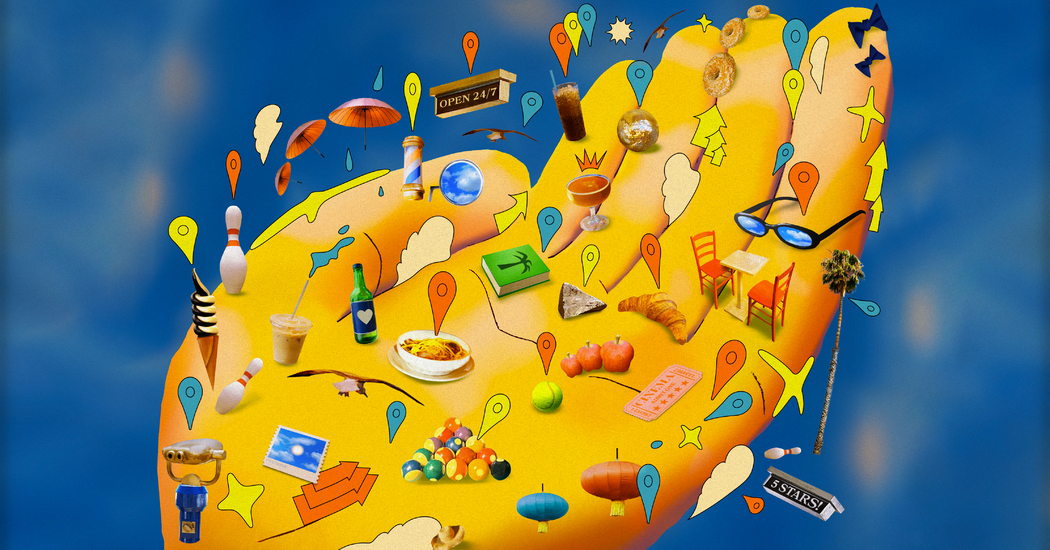A uniquely 20-something cocktail of ambition, stupidity and wanderlust led me to take a job in Berlin fresh out of college. My due diligence consisted of watching several of Rainer Werner Fassbinder’s movies and calling it a day. I had visited the city before, crashing with lovers and loose acquaintances, but my sense of how to build a life there — or in any new place, for that matter — was nonexistent. The practical matters of adjusting to a new city bedeviled me. After work I longed to navigate the city with purpose but had nowhere in particular to go. Interminable weeks at the office gave way to lonely weekends spent not queuing up for clubs but crying on a floor mattress in Charlottenburg, anxiety taking hold at the thought of another aimless walk. A fun decision made in haste, for all its adventurous merit, had left me lost and lonely.
So I emailed a writer I looked up to who lived in Berlin in her 20s. She did not direct me to an apartment-rental agency or language school. Instead she replied immediately with a series of Google Maps links: anarchist cafes and independent cinemas, Sichuan restaurants and secondhand stores. The highlight was a toilet-themed bar. I bookmarked the writer’s locations in my own map and set out toward the nearest blue pin, a Chinese restaurant. That night, tucking into a bowl of mapo tofu, I felt something resembling solace. I sat at a table for one, but this mundane digital gesture — being directed somewhere specific, walking the path of someone who had come before me — made me feel looked after.
I had used Google Maps mainly for subway directions. I opened the app every day, but its social function never occurred to me. Sure, I had saved spots here and there, and maintained a “want to try” list, where the names of trendy restaurants piled up never to be consulted again. The real fun, I learned, begins when you start to use Google Maps in multiplayer mode: building shared lists of saved locations with and for others, remotely populating their digital landscape with little pins. It’s a simple action that conjures an increasingly rare sense of virtual care.
Populating a shareable map is an exercise in memory. I started making shared maps as a way of staying in touch with faraway friends and as a key to my own psycho-geography, doled out to give dear ones a glimpse into my world. I’ve printed out QR codes with links to shared maps and given them as birthday and wedding presents. When my German bestie told me she was planning a trip to New York, I remembered my own sense of overwhelm upon walking through Manhattan after moving there at 18 — as if the city were threatening to swallow me whole. I made her a Google Map in hopes of making the vastness more manageable. I nudged her to my favorite haunts; hearing her report back, I felt as if my past were intertwined with her present.
The internet once promised this kind of communal reverie, evoked by the talismanic word “connection.” In practice, today’s glut of information has rarely helped me find what I’m seeking. Searching for something like “best bar in Berlin” is more likely to freeze me in a state of information overload. Results are cluttered by paid placements and SEO word soup, transforming the user experience into a labyrinth of algorithm bait, making me all the more grateful for the offbeat affordances that remain. Maybe it’s a stretch to say that collaboratively building a list of natural-wine bars with a handful of pals counts as using the search engine against the grain. Still, something about shared mapping seems to run contrary to the spirit of contemporary tech — reaching back to earlier eras of the internet, to spaces of play at the margins of commercialization. The joy of shared Google Maps derives from the social fabric that users create with what they’re given.
With each dropped pin, a spell is cast, converting one person’s nostalgia into another’s newfound sense of belonging.
Shivering through a dark Berlin winter day, I complained to a friend, “All I want in this life of sin is a bubble bath.” She could not provide me a bathtub, but she could provide a Google Map called “Spa Life🫧,” a crowdsourced globe-trotter’s guide to bodies of warm water (and a few dry saunas), drawing in equal measure both from friends’ actual and fantasy travels. It was annotated with helpful intel (where to find a cold plunge; where to cook an onsen egg) and inside jokes (“When in Bath, must bathe”), our combined commentary accumulating over time. The prospect of making the pilgrimage to many of the spots contained therein was far-fetched, but scrolling through the list lent a warmth to that drab afternoon, now filled with richly detailed daydreams about skinny-dipping at a five-star hotel in Gstaad.
The comfort of having somewhere tried and true to go even when you’re a stranger in a foreign city is the kind of feeling one might expect the German language to contain a long compound noun for. Sadly, to the best of my knowledge, none exist. The richness of a shared map comes closest for me. It reflects the idiosyncrasy of a collective meandering, whether in actual travel or sheer imagination. How rare it is to have a Big Tech tool that cultivates these gestures of genuine connection. Strolling through a city, on foot or onscreen, enchanted by reminders of friends’ presence feels magical — with each dropped pin, a spell is cast, converting one person’s nostalgia into another’s newfound sense of belonging.
Adina Glickstein is a Colorado-based writer and editor whose work has appeared in Artforum, Hyperallergic and Spike.







